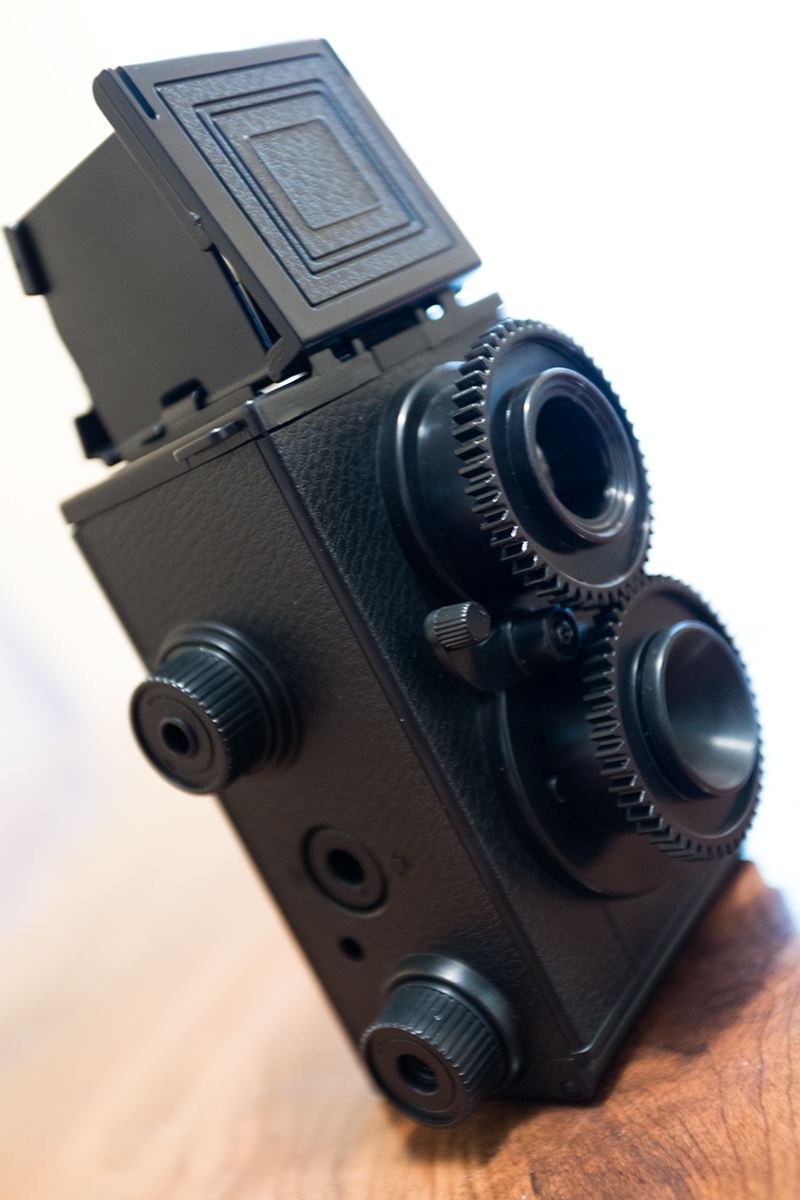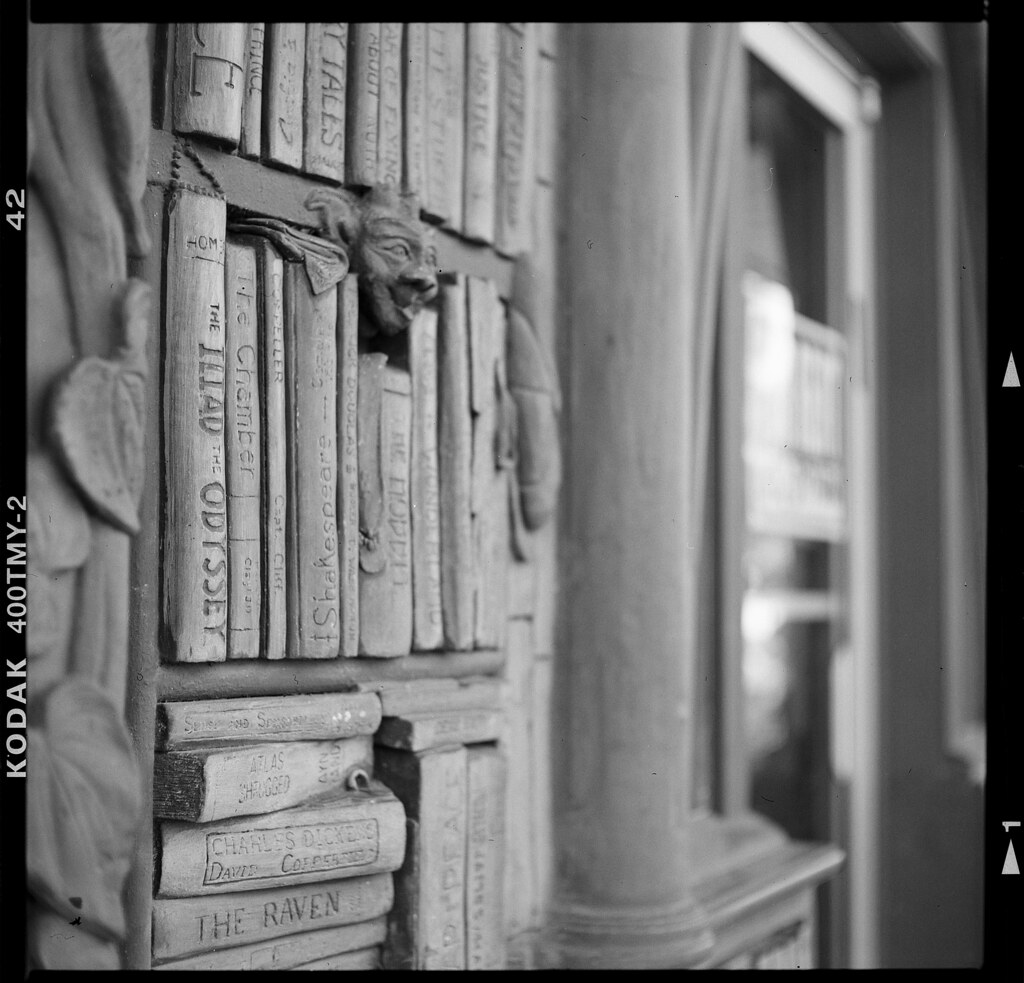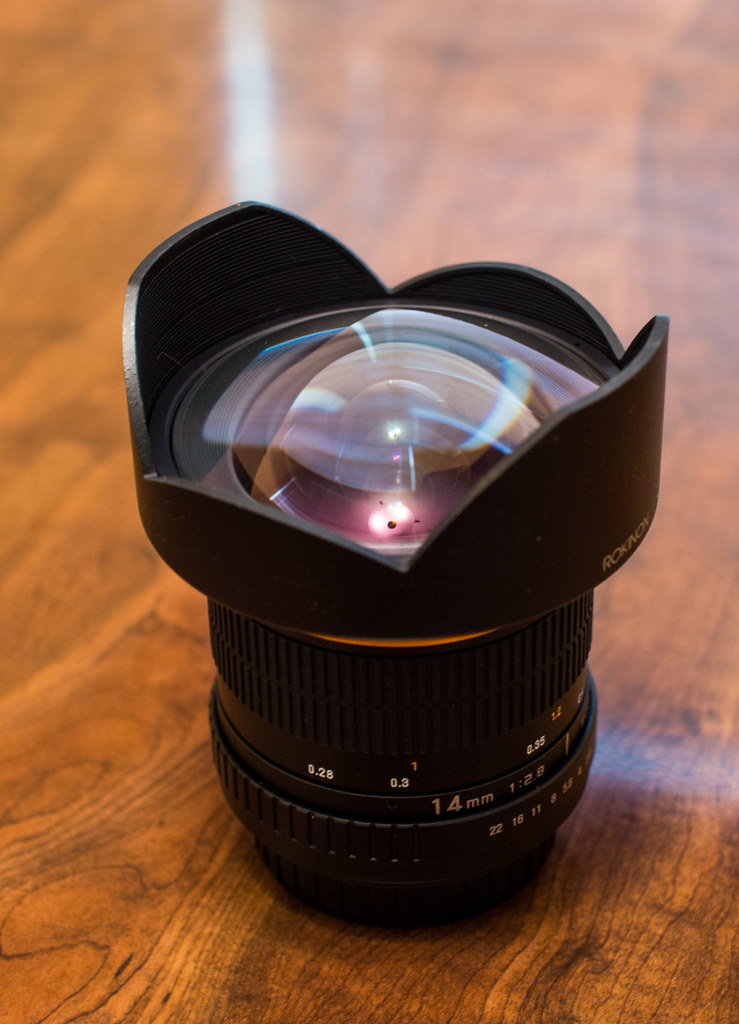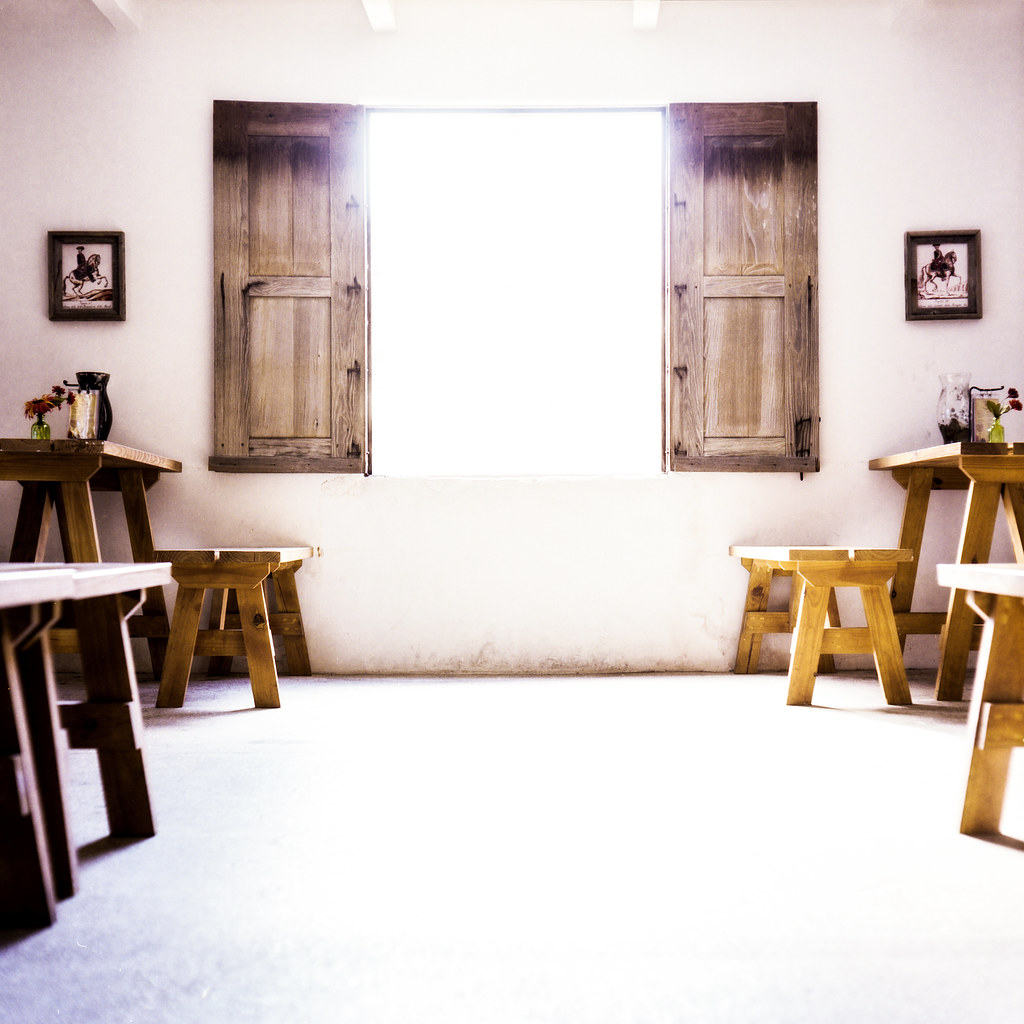 |
| Recesky DIY TLR, assembled. |
The Recesky DIY TLR fascinates me for some
reason. It's basically a super cheap (about US$15) kit that resembles one of those inexpensive airplane model kits that you can get at any hobby shop. Everything is molded plastic, all in the same color, with a few springs and a bag of screws, and two plastic lenses.
Everything is reduced to its component parts, so I found it pretty interesting, especially building out the shutter mechanism. Of course it's tragically basic, but it was still cool to put it all together and see it work.
Once fully assembled, you have a basic, no frills TLR; it has a flip-up hood that you can open to expose the matte waist-level finder, which like any TLR is reflecting an image back from the viewing lens (in reverse). The two lenses are linked by gear teeth so that when the viewing lens is being focused, the taking lens is focused by the same amount.
The shutter trips at what I can only imagine is a somewhat approximate 1/125 second, it's basically a spring-loaded piece of plastic that swings out and springs back when you press down on the shutter release lever, located at the front of the camera. The aperture is fixed at f/11, so really the only actual exposure control you have is changing up the film speed when you switch rolls.





